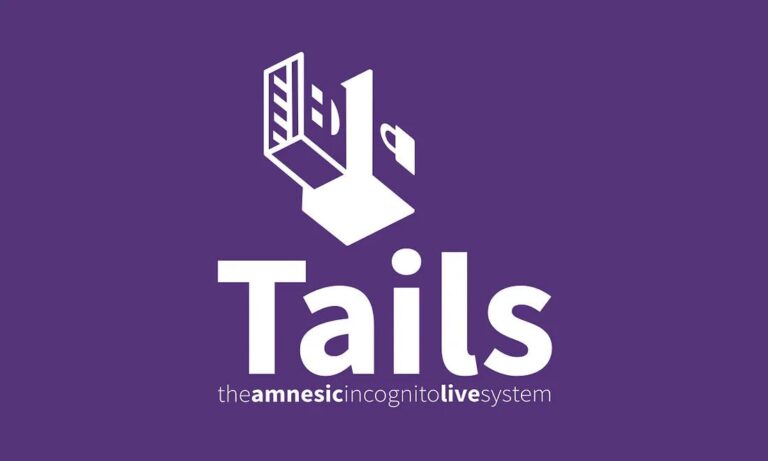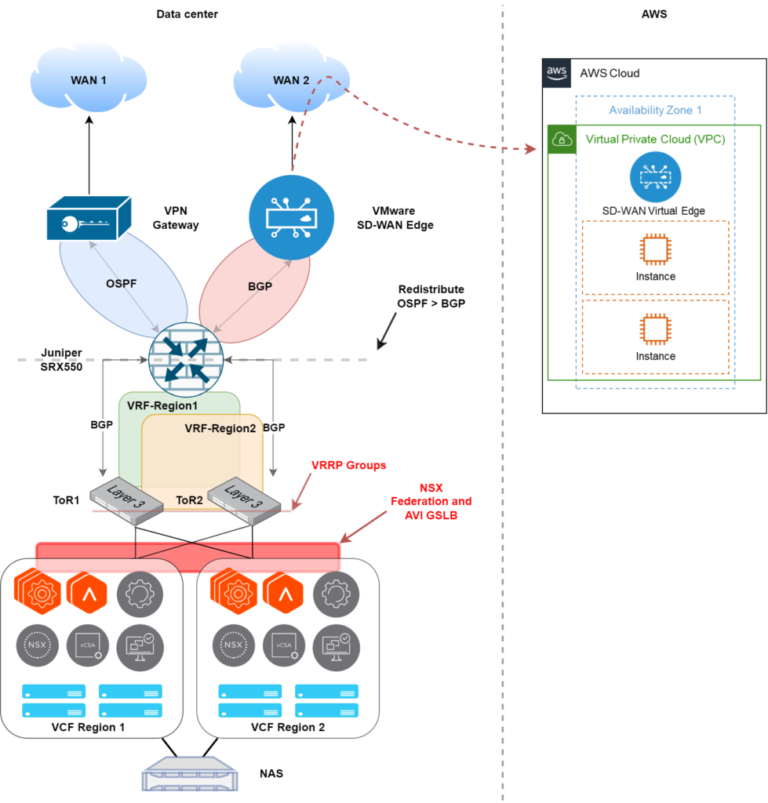In today’s increasingly digital world, cybersecurity has become more important than ever.
From phishing attacks to malware and ransomware, the threats are constantly evolving.
But what exactly is cybersecurity, and why are best practices so crucial?
We will explore common cybersecurity threats, ways to protect yourself from them, and the best practices to implement.
We will also discuss the steps to take in case of a cybersecurity breach.
Stay tuned to learn how to stay safe in the digital realm.
Key Takeaways:
What Is Cybersecurity?
Cybersecurity involves the protection of digital systems, networks, and data from cyberattacks, ensuring the confidentiality, integrity, and availability of information within an organization.
In today’s interconnected world, the significance of cybersecurity cannot be overstressed. With the rapid advancement of technology, organizations face increasingly complex threats to their data and networks. Cyberattacks come in various forms, such as malware, phishing, ransomware, and more, targeting weaknesses in security protocols. By implementing robust cybersecurity measures, businesses can thwart these attacks and prevent the unauthorized access to their sensitive information.
Educating employees about cybersecurity best practices is paramount. Human error remains one of the primary causes of security breaches. Therefore, conducting regular cybersecurity training sessions can equip staff with the knowledge and skills to recognize and respond to potential threats effectively.
Why Are Cybersecurity Best Practices Important?
Implementing cybersecurity best practices is crucial for organizations to mitigate risks, protect valuable data assets, and maintain a proactive defense against evolving cyber threats.
Regular cybersecurity audits are essential to identify vulnerabilities, gaps, and potential entry points for malicious actors. By conducting these assessments, organizations can assess their current security posture and address any weaknesses promptly. Developing a robust security strategy involves implementing layers of defense mechanisms, such as firewalls, encryption, and access controls, to safeguard sensitive information. Adopting advanced frameworks like zero-trust architecture is becoming increasingly vital in today’s threat landscape, where traditional perimeter-based security solutions are no longer sufficient.
What Are the Common Cybersecurity Threats?
Common cybersecurity threats encompass a range of attacks targeting technology infrastructure, sensitive data, and critical information assets, posing significant risks to organizations and their operations.
Cyberattacks, one of the most concerning cybersecurity threats, exploit vulnerabilities in networks, systems, and applications to gain unauthorized access to sensitive data.
Malware, another prevalent threat, encompasses a variety of malicious software designed to disrupt operations, steal data, or cause damage to computer systems.
Insider threats, though often overlooked, can be equally detrimental, with employees, contractors, or partners posing risks by intentionally or accidentally compromising security.
These threats undermine the confidentiality, integrity, and availability of information, necessitating robust cybersecurity measures to protect against their adverse impacts.
Phishing Attacks
Phishing attacks are deceptive tactics employed by hackers to trick individuals into divulging personal information such as passwords, financial details, or confidential data.
These attacks often come in the form of fraudulent emails or messages that appear legitimate, leading the recipient to click on malicious links or provide sensitive information unknowingly. Once hackers obtain this personal information, they can use it for identity theft, financial fraud, or other malicious activities.
Phishing Attacks can have severe consequences for both individuals and organizations, including financial losses, reputational damage, and compromised data security. To combat such threats, it is crucial for organizations to educate employees about recognizing phishing attempts and implementing robust cybersecurity measures such as multi-factor authentication and regular security audits.
Malware and Ransomware
Malware and ransomware are malicious software programs designed to infiltrate computer systems, encrypt data, and extort organizations for monetary gain or sensitive information, posing a severe threat to trade secrets and proprietary data.
Malware typically includes viruses, worms, trojans, spyware, and adware, each with distinct characteristics and methods of infiltration. In contrast, ransomware specifically encrypts files or systems, demanding a ransom for decryption. These cyber threats can lead to data breaches, financial losses, and reputational damage for businesses. Trade secrets are particularly vulnerable to such attacks, as they contain valuable intellectual property critical to a company’s competitive advantage.
Insider Threats
Insider threats involve malicious actions or negligence by internal personnel such as employees, contractors, or partners, potentially jeopardizing sensitive information, government operations, or organizational security architecture.
These risks pose significant challenges to the safeguarding of critical data and systems. To combat insider threats effectively, organizations need to implement stringent access controls, continuously monitor employee behaviors, and conduct regular security awareness training. By enhancing employee training on recognizing and reporting suspicious activities, companies can bolster their defense mechanisms against potential breaches. Appointing a designated security architect allows for a dedicated focus on creating robust security frameworks to mitigate insider risks. It is essential for organizations to acknowledge and address the complexities of insider threats proactively to maintain a secure operational environment.
Denial of Service (DoS) Attacks
Denial of Service (DoS) attacks target network resources or services, overwhelming them with malicious traffic to disrupt legitimate user access, necessitating the use of VPNs and strategic guidance from industry experts like Gartner to counter such threats.
These nefarious attacks aim to render a service unusable, causing severe disruptions in business operations and financial losses. By flooding the target with an excessive amount of requests, attackers exhaust bandwidth, processing power, or network resources, leading to service instability.
VPN, or Virtual Private Network, plays a crucial role in mitigating DoS attacks by creating a secure and encrypted connection, shielding network traffic from potential threats. Gartner, a renowned research and advisory company, provides valuable insights and recommendations to organizations to enhance their cybersecurity posture against evolving threats like DoS attacks.
How Can You Protect Yourself from Cybersecurity Threats?
Ensuring robust security measures, implementing comprehensive access policies, and utilizing strong passwords are key steps individuals and organizations can take to enhance protection against cybersecurity threats.
In terms of protecting sensitive data and maintaining privacy, having a well-defined security policy in place is crucial. This should include regular system updates, network monitoring, and firewall configurations. It is essential to educate employees about security protocols and best practices to prevent phishing attacks and other common cyber threats.
Enforcing a strict password hygiene policy across all accounts and devices can significantly reduce the risk of unauthorized access. Encouraging the use of complex passwords and implementing multi-factor authentication adds an extra layer of security. Limiting access permissions only to necessary individuals or teams can help minimize potential security vulnerabilities.
Use Strong and Unique Passwords
Using strong and unique passwords is a fundamental security practice recommended by security consultants to prevent unauthorized access to sensitive data and digital accounts.
When crafting a password, it’s crucial to avoid easily guessable combinations such as ‘123456’ or ‘password’. Instead, opt for a mix of uppercase and lowercase letters, numbers, and special characters to enhance security. Password management tools like LastPass or Dashlane can help manage multiple complex passwords across various platforms.
- Security consultants also emphasize the importance of changing passwords regularly to mitigate the risk of breaches due to prolonged use of the same password.
- Enabling two-factor authentication provides an added layer of security, confirming the user’s identity through an additional verification step.
Keep Your Software and Devices Updated
Regularly updating software and devices, leveraging tools like Ekran System for comprehensive vulnerability management, is essential to shield against exploits and security vulnerabilities that cyber attackers may target.
Software updates and patches play a critical role in ensuring that your systems are fortified against the ever-evolving landscape of cyber threats. By staying up-to-date with the latest software versions, you can effectively plug potential security holes and prevent malicious actors from exploiting known vulnerabilities.
This is where a robust solution like Ekran System steps in. It not only monitors and tracks software updates across your network but also provides real-time alerts and audit trails to thwart unauthorized access attempts.
Ekran System serves as a powerful ally in the fight against cyber threats by enabling organizations to proactively identify and mitigate potential risks, thereby bolstering their overall security posture in today’s technology-driven world.
Be Aware of Social Engineering Tactics
Being vigilant against social engineering tactics, which manipulate individuals into divulging confidential information or granting unauthorized access, is crucial to safeguard sensitive data such as health records and personal information.
Social engineering attacks often prey on human psychology and trust, exploiting emotions like fear, urgency, or curiosity to deceive victims. Common tactics include phishing emails, pretexting, baiting, and tailgating. Understanding these tactics is essential in recognizing potential threats.
One key strategy is to verify requests through alternate channels before sharing sensitive information, such as contacting the supposed sender directly or cross-checking with known contacts. Developing a culture of skepticism and promoting awareness about social engineering can enable individuals to prevent falling victim to such scams.
Use Secure Networks
Employing secure networks, including secure VPN connections, to safeguard data transmissions and communications within the supply chain ecosystem is a critical recommendation endorsed by industry experts like McKinsey.
Ensuring a robust network architecture is not just a matter of protecting sensitive information, but also a strategic imperative for businesses today. By implementing VPN technologies, companies can create encrypted tunnels that shield data from unauthorized access, reducing the risk of cyber breaches and data leaks.
According to insights provided by McKinsey, the vulnerability of supply chain networks to cyber threats has escalated in recent years, prompting organizations to adopt comprehensive security measures. By deploying advanced encryption protocols and adopting a zero-trust approach, companies can fortify their networks against evolving cyber risks.
What Are the Best Practices for Cybersecurity?
Implementing best practices for cybersecurity involves proactive measures such as firewall deployment, antivirus software utilization, data encryption, and comprehensive employee training to fortify information security within organizations.
Firewall deployment is crucial as it acts as a barrier against unauthorized access, monitoring incoming and outgoing traffic to prevent cyber threats from breaching the network. Antivirus software plays a vital role in identifying and eliminating malicious software that could compromise sensitive data. Data encryption ensures that information is scrambled into unreadable code, safeguarding it from unauthorized access. Comprehensive employee training programs are important as human error is a common vulnerability exploited by cybercriminals, emphasizing the need for ongoing education and awareness.
Implement a Firewall
Deploying a robust firewall solution, backed by stringent access policies and tailored configurations, is essential to fortify business networks and systems against external threats and unauthorized access attempts.
Firewalls play a critical role in establishing a secure barrier between a network and potential threats, acting as gatekeepers that monitor incoming and outgoing traffic.
By implementing firewall policies, organizations can control access, monitor traffic for suspicious behavior, and prevent malicious attacks by blocking unauthorized traffic.
Aligning firewall configurations with specific business requirements ensures that security measures are customized to address the unique challenges and vulnerabilities faced by the organization.
Use Antivirus Software
Leveraging advanced antivirus software solutions to detect, quarantine, and mitigate cyber threats, including malware and ransomware, is a critical defense mechanism in safeguarding technology assets against evolving cyberattacks.
Antivirus software plays a vital role in enhancing cybersecurity defense by employing sophisticated algorithms to constantly scan systems and networks for any suspicious activities or files. These programs are designed to identify patterns and behaviors associated with known threats, enabling timely detection and remediation.
Antivirus software provides real-time protection by monitoring incoming and outgoing data traffic, thus preventing malicious code from infiltrating devices and compromising sensitive information. By regularly updating virus definitions and security patches, users can ensure that their systems are equipped to combat the latest cyber threats.
Encrypt Sensitive Data
Encrypting sensitive data through robust encryption protocols and access controls helps safeguard critical business information, preventing unauthorized disclosure or exploitation of confidential assets.
-
Effective implementation of data encryption ensures that even if unauthorized individuals gain access to the data, they are unable to decipher it without the proper decryption key, adding an extra layer of security.
-
By limiting access to sensitive information through access control measures such as role-based permissions and multi-factor authentication, businesses reduce the risk of data breaches and insider threats.
-
Secure data handling practices, including regular monitoring, encryption key management, and secure data disposal procedures, are crucial in maintaining the confidentiality, integrity, and availability of critical business data.
Train Employees on Cybersecurity Awareness
Educating employees on cybersecurity awareness, policy adherence, and incident response protocols is vital to cultivate a security-conscious workforce equipped to identify and address potential cyber threats within the business environment.
Through comprehensive training programs, organizations can enable their staff to recognize phishing attempts, secure sensitive data, and understand the importance of adhering to security policies to protect company assets.
Educating employees on incident response protocols ensures a swift and effective reaction in case of a security breach, minimizing the impact and potential financial losses.
By instilling a culture of security awareness within the workforce, businesses can significantly reduce the risk of data breaches and cybersecurity incidents, safeguarding their reputation and maintaining customer trust.
What Are the Steps to Take in Case of a Cybersecurity Breach?
In case of a cybersecurity breach, swift actions such as disconnecting from the internet, notifying appropriate authorities, conducting thorough investigations, and implementing preventive measures are critical to mitigate damages and prevent future incidents.
Once the breach is identified, isolating the affected systems and communication channels through disconnecting from the internet is a crucial step to contain the damage. Simultaneously, timely reporting to relevant cybersecurity agencies and law enforcement authorities for their assistance and insights can provide invaluable support in managing the situation effectively. Meanwhile, conducting detailed forensic analyses to determine the extent of the breach and identify the vulnerabilities exploited is essential to prevent similar incidents in the future.
Disconnect from the Internet
Immediately disconnecting affected systems from the internet upon detecting a cybersecurity breach is crucial to contain the threat, preserve digital assets, and prevent further unauthorized access to critical business information.
By isolating breached systems, companies can limit the spread of malware and malicious software throughout their network infrastructure. This isolation step is a strategic security measure that can effectively minimize the impact of the breach and prevent potential data exfiltration.
When a network connection is severed, it hinders cybercriminals from moving laterally within the organization’s digital environment, ultimately safeguarding sensitive information from exploitation. This swift response not only defends the targeted systems but also shields interconnected devices from being compromised.
In essence, swift disconnection plays a pivotal role in maintaining the integrity of business operations and upholding confidentiality.
Notify the Appropriate Authorities
Promptly informing relevant authorities, such as data protection agencies or law enforcement, about a cybersecurity incident involving sensitive data like health records, helps initiate investigations, compliance procedures, and regulatory support to address the breach effectively.
By reaching out to these entities, organizations can ensure that the incident is handled in accordance with regulatory compliance requirements specific to data protection and privacy. Under various legal frameworks, such as GDPR in the European Union or HIPAA in the United States, there are clear obligations for reporting data breaches involving personal health information.
Conduct a Thorough Investigation
Conducting a comprehensive investigation into the cybersecurity breach, leveraging forensics tools and industry expertise, is essential to identify root causes, assess damages, and protect critical technology assets, including trade secrets.
During the investigative process, specialized technology tools like intrusion detection systems, log analyzers, and malware scanners are deployed to gather evidence and track the attacker’s movements. Cybersecurity professionals with expertise in digital forensics meticulously analyze the collected data, looking for patterns and anomalies that could indicate unauthorized access or data exfiltration.
Forensic methods such as memory analysis, network packet inspection, and disk imaging are crucial in determining the extent of the breach and the potential exposure of sensitive information such as intellectual property and proprietary algorithms.
Implement Measures to Prevent Future Breaches
Implementing proactive measures, such as revising security policies, enhancing network defenses, and conducting employee training programs, is essential to prevent future cybersecurity breaches and reinforce the resilience of business operations and information assets.
By continuously updating security policies in line with emerging threats and industry best practices, organizations can stay ahead of potential vulnerabilities.
Strengthening network defenses through regular security assessments, penetration testing, and the adoption of advanced firewall technologies can create formidable barriers against cyber threats.
Investing in comprehensive employee training programs focusing on cybersecurity awareness, best practices, and incident response protocols can enable staff to act as the first line of defense in detecting and mitigating potential risks.
Frequently Asked Questions
What are some common cybersecurity best practices to protect my data?
Some common best practices include regularly updating your software and operating systems, using strong and unique passwords, enabling multi-factor authentication, and avoiding suspicious emails or links.
How can I secure my devices against cyber threats?
To secure your devices, you should install reputable antivirus and anti-malware software, use a virtual private network (VPN) when connecting to public Wi-Fi, and regularly back up your data.
Why is it important to implement cybersecurity best practices?
Implementing best practices can help protect your personal and sensitive data from cyber attacks, prevent identity theft, and maintain the security of your devices and networks.
What should I do if I suspect my device or account has been compromised?
If you suspect a compromise, immediately change your passwords, run a virus scan, and contact your service provider. It is also recommended to monitor your accounts and credit for suspicious activity.
Are there any specific best practices for businesses to follow?
Yes, businesses should implement a comprehensive cybersecurity plan, provide regular employee training on cyber threats, regularly back up data, and regularly test their security systems.
How can I stay updated on the latest cybersecurity threats and best practices?
You can stay updated by following reputable cybersecurity news sources, attending workshops or webinars, and subscribing to newsletters from trusted security companies.




